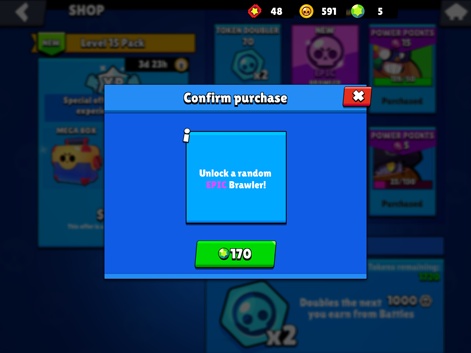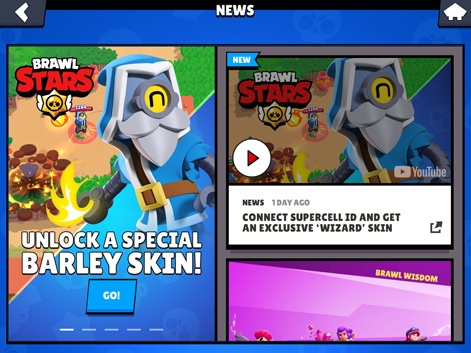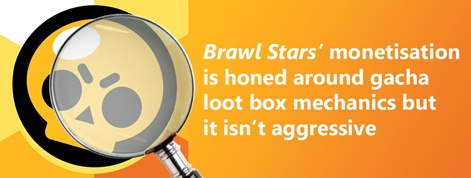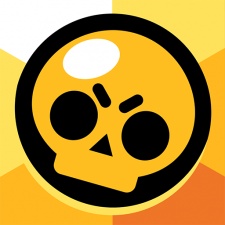Welcome to The In-App Purchase Inspector – our regular look at free-to-play mobile game monetisation from the consumer's perspective.
In each instalment, we consider how well a developer has designed its in-app purchase retailing to work alongside the overall gameplay and metagame experience.
This time we're looking at Supercell's much anticipated (and delayed) team-based top-down shooter Brawl Stars.
Taking back control
Given previous game Clash Royale was described by monetisation experts as having “sophisticated and extremely aggressive” retailing, the big surprise with Brawl Stars is just how simple and streamlined its monetisation is.
But interestingly, given how much attention has been focused on the changes made to the game’s controls and its aspect ratio during soft launch, the monetisation was tightened up in some subtle yet significant respects too.
Comparing the globally-released version of the game to our In-App Inspector article for the original soft launched game in October 2017, the Chip resource used to unlock new brawlers has been scrapped. Now, new brawlers are unlocked through the game’s gacha loot box system, Brawl Boxes.
Brawl Stars will generate its billions by appealing to a large audience monetised at a low level.
The same is true for Elixir. This was a universal resource that could be used to upgrade either the health, standard attack or super attack of any brawler. It’s been replaced by Power Points, a levelling currency which is specific to each brawler, not universal.
Brawlers no longer have the three attributes that can be separately levelled up either. Spending power points upgrades all of them simultaneously.
Streamlined through loot boxes
The impact of these changes is to reduce players’ freedom when it comes to unlocking and levelling up brawlers. The game currently has 22 different characters.
Previously it was possible to focus resources on a couple of specific characters in terms of the unlock and levelling processes. Now, however, unlocking and levelling brawlers is a totally random process dependent on drops from Brawl Boxes.
Hence all game progression and monetisation is streamlined through this loot box system, of which there are three options. All open immediately, without the waiting around Supercell popularised within the F2P mobile sector in Clash Royale.
The price of unlocking the standard Brawl Box is 100 tokens. These are earned as you play the game, although you can speed this up by buying a token doubler. Each Brawl Box contains the game’s soft currency Gold and two other items, power points or brawler unlocks.
Big Boxes offer three times the rewards and can either be purchased using the hard currency Gems or collecting 10 Star Tokens.
The largest box is the Mega Box, which contains 10-times the rewards of Brawl Boxes and can only be purchased with hard currency. And this - together with one-off random epic brawler purchases (see below) - will be the place in which hardcore players will be focusing their spending and where Supercell earns the most money.

Hard currency is purchased in the standard manner, with six retailing options available. Gems can also be converted into gold, which is used to level up brawlers and buy power points, which are provided as daily deals through the game’s store. This features the usual array of discounted one-off bundles and random special offers.
The game’s monetisation is well honed but isn’t aggressive.
Each brawler also has a set of skins, although it’s not yet clear how they will combine with monetisation. At present Supercell appears to using them more for social engagement.
Wide and shallow
Comparing Brawl Stars’ monetisation to that of Clash Royale, then, it’s more indirect, triggered by player motivation rather than directly by metagame progression.
This makes sense as Brawl Stars is a more mass market game being - on one level - a pick-up-and-play shooter, in which players will likely have their favourite brawlers but not be overly concerned about levelling them up in any strategic sense.
In that regard, the game’s monetisation is well honed but isn’t aggressive and there will be little incentive for most players to spend any money.

As a deck-based card game, Clash Royale required a higher level of engagement and monetisation to unlock the best cards, as well as the ability to spend to ensure your deck was well balanced.
Certainly, it was also a skill-based game, but in a more abstract way than Brawl Stars.
Clearly, Brawl Stars is a game Supercell expects will generate its billions (if so) by appealing to a very large audience, which it will monetise at a relatively low level compared to the high ARPU potential of 4X, trading card and role-playing games.
And if the early signs are anything to go by, it’s off to a great start. But there will be a long way to go in terms of updates, new brawlers and esports tournaments, etceter,a before Brawl Stars can sit alongside Clash of Clans and Clash Royale as Supercell’s third game to one billion dollars of lifetime revenue.
























